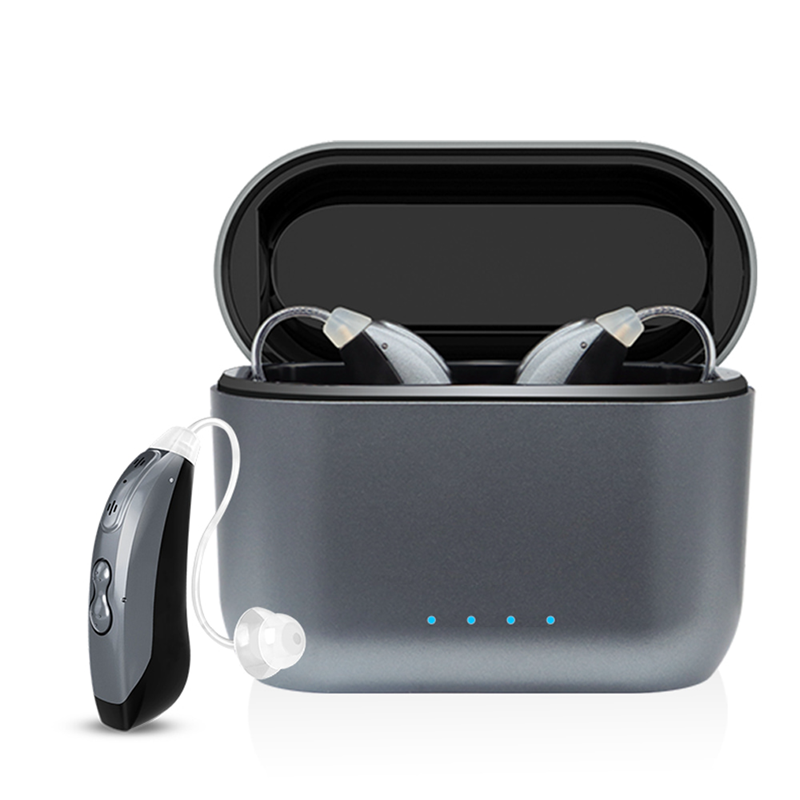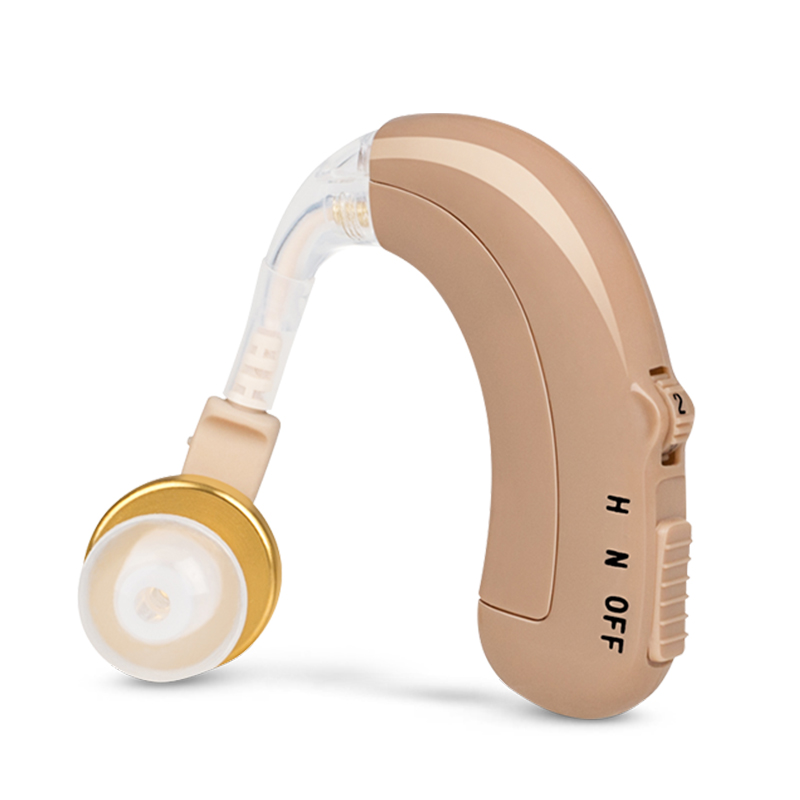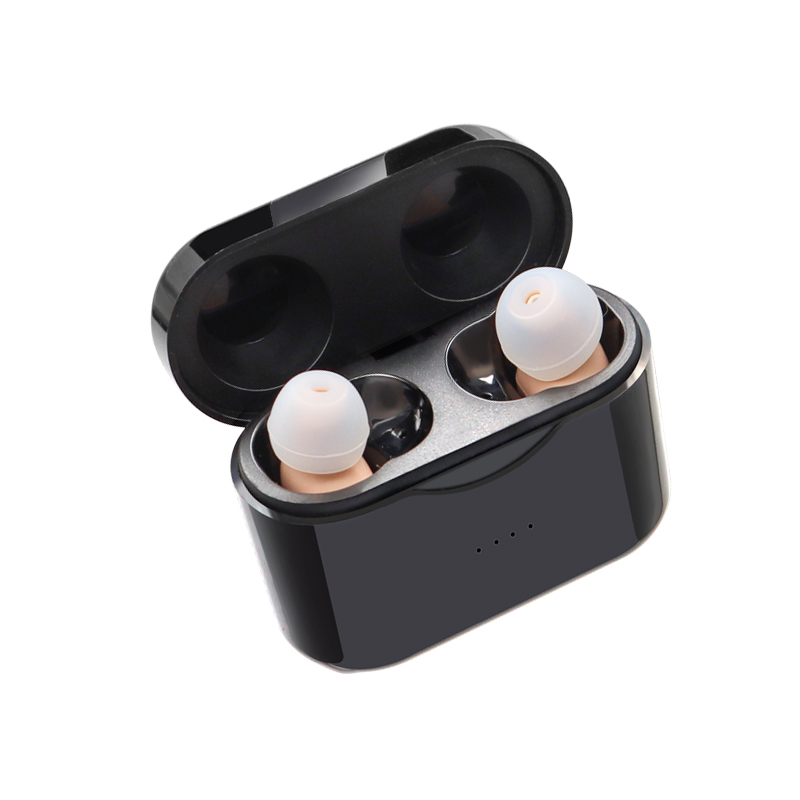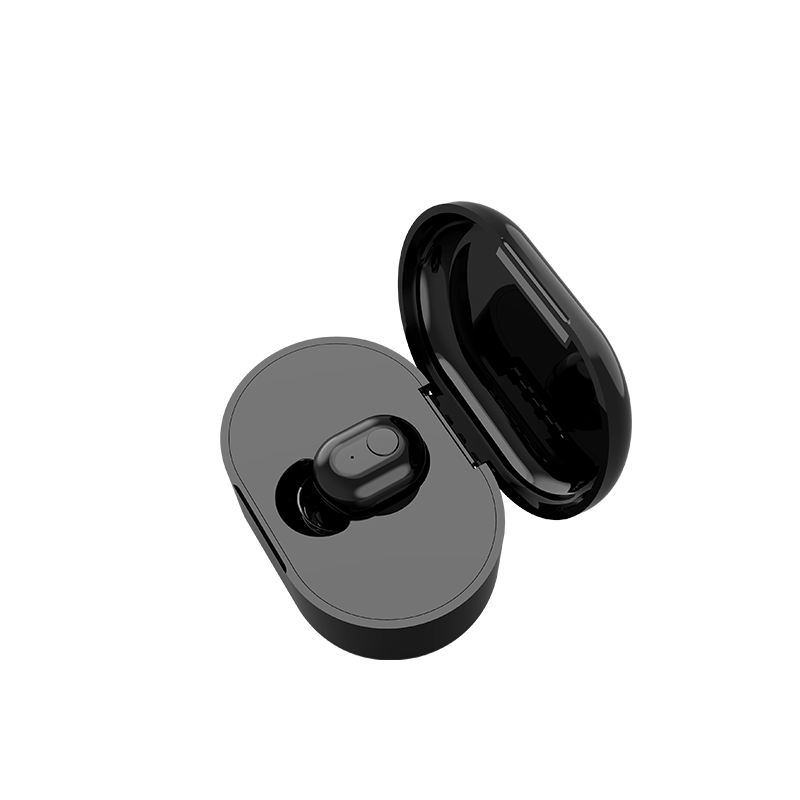Key points:
-
Your hearing care provider will create several hearing aid settings based on your hearing test results.
-
The settings adjust automatically depending on your environment.
-
You also can add custom hearing aid settings to fit your unique needs and preferences. For example, birders and musicians often ask for specialized settings.
Today’s hearing aids are designed to adapt to the soundscapes you enter—that is, as you go from a loud restaurant to your quiet bedroom, your hearing aid will shift accordingly, choosing programs that match the sound levels of your environment.
“The hearing aid will actually switch into depending on what it thinks is best,” says Laura Sherry, AuD, research audiologist at Johns Hopkins Cochlear Center for Hearing and Public Health.
These default programs are sophisticated and helpful—but as you go through your day, you might find that there are certain environments where the programs don’t fully meet your needs.
In those scenarios, you may benefit from customizing your settings and adding personalized programs to the hearing devices.
With that in mind, let's take a look at hearing aid settings, starting with default settings, and then possible custom settings you can add for your unique hearing needs.
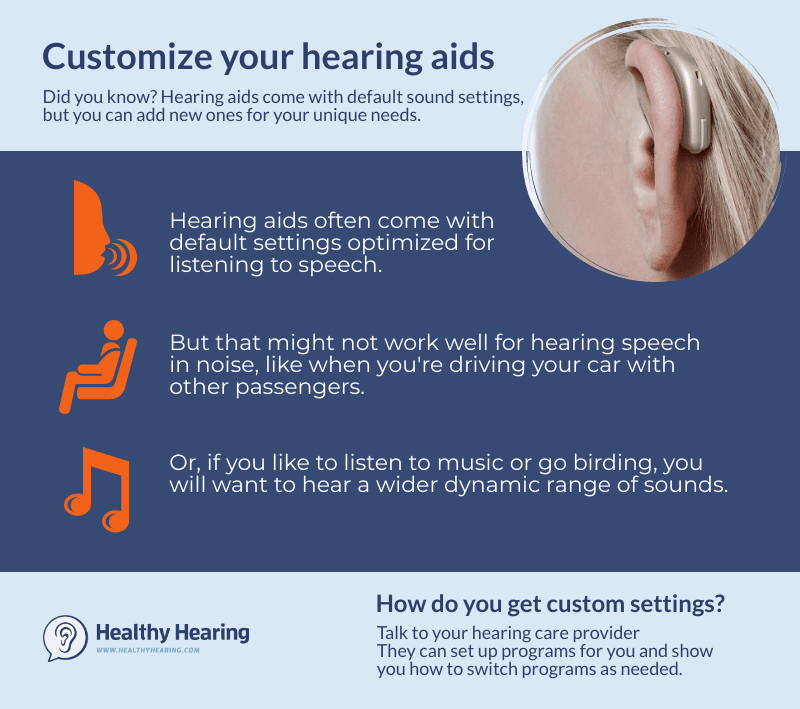
Default hearing aid settings
The programs and settings present in your hearing aid are set up according to your hearing test and real ear measurement results.
“When you import the hearing test results into the hearing aid, then the hearing aid knows to add a little bit of volume where they have a little bit of hearing loss, but much more volume where they have more hearing loss,” Sherry says.
This process is known as hearing aid fitting, when hearing care providers talk programs and settings.
Hearing aids can switch settings automatically
Many of these settings are automatic, with the hearing aid transitioning from one program to another without input from the person wearing the device. The hearing aid will switch in and out of programs, as well as making determinations about how much additional volume to add, Sherry notes.
The number of programs depend on the specific device you have. Around three to five programs tend to come as a default. They typically include a program for hearing speech in quiet environments, and another for when there's a lot of background noise, Sherry says.
Custom hearing aid settings
But of course, the hearing aid is just a machine. There are situations where a person might want more control than the automatic moves from the hearing aid. To that end, users can manually turn on the program of their choice, Sherry says.
“We can make a custom program for that person for whatever environment they might be struggling in,” Sherry says.
Programmable hearing aids can be set up to include settings such as:
- A wind noise reduction program that’ll cut down on the sounds of wind whipping around the mic
- Feedback suppression—to quell a whistling reverb in your ears
- A car program, which adjusts the microphone’s direction to help you pick up what the person in the passenger seat (or behind you) is saying, to help overcome a common hearing problem when driving
- A birding program to help pick up the fast-moving, high-pitched sounds of birdsong
- A restaurant program to pick up sound from the speaker in front of you and dampen background noise
Music lover? Request a custom program
It’s very common for people to request a program for listening to music or TV, Sherry says.
“Music is an example of when we might need a manual program because hearing aids are really optimized to understand speech. Music is a different ballgame entirely,” she says.
Music programs tend to remove a lot of features, so that what you hear with the help of hearing aids closely matches the input, Sherry explains. An audiologist can target the program for the exact circumstances where you listen to music, whether that’s a choir singing in church or streaming music through at-home speakers.
Have a unique hearing situation? Talk to your hearing care provider
“To design and really fine tune the parameters within each program, that's something that you'd want to sit down with your audiologist and talk about,” Sherry says.
This process will likely require at least one follow-up appointment (and maybe several), Sherry says. Once the new program is in place, you’ll want to test out what it sounds like in a real-world setting, which can sometimes vary from the serenity of the audiologist office.
Once you’ve tested out the program in your everyday life, you can share feedback, and your audiologist will “make minor adjustments” as needed, Sherry says.
If you need hearing care
If it's time to get new hearing aids, or get a hearing test, use our directory to find a hearing care provider near you. Our patient reviews are verified, and you're welcome to leave feedback about your provider after your visit.
The above is the interpretation of Hearing Aid Settings: Default Programs vs. Custom Adjustments provided by Chinese hearing aid supplier Shenrui Medical. Link https://www.srmcm.com/Blog/Hearing_Aid_Settings_Default_Programs_vs._Custom_Adjustments.html of this article is welcome to share and forward. For more hearing aid related information, please visit Blog or take a look at our Hearing aids products


